HRC Point Source Constraints
M. Juda
May 28,1997
1 Introduction
In an earlier memo (``Bright Sources and the HRC'' 1995 Nov 2) I
described how MCP gain reduction with dose would lead to a limit on
how bright a point source could be in the field of view (near on-axis)
when using the maximum dither; I proposed that the maximum allowed rate
in the HRC for near on-axis point sources be
200 counts s-1.
However, it is possible that there could be a period of time between
the end of a slew and the start of normal pointing when the observatory
would not be dithering.
Using the same dose constraints and an expected time that the
observatory would not be dithering, a much lower rate limit is
reached ( ~ 5 counts s -1).
In this memo, I present revised calculations of the expected rates in
the HRC-I for different source spectra.
From these expected rates and a rate limit of
~ 5 counts s -1, I derive a flux density (0.05-10.0 keV)
limit of ~ 1µJy on sources that cannot be in the HRC field of
view until the dithering is active unless the MCP HV is decreased.
2 Observatory Dither
The current design of the PCAD software only implements dither in
normal-pointing mode and only if dither is requested.
Dither would be turned-off at the start of a slew.
During the slew the observatory is scanning fast enough that most
bright sources will not provide a significant dose to any location on
the MCP.
At the end of a slew the PCAD system acquires stars in the aspect
camera.
During this period of time the observatory may point quite stably.
The time that it takes to do this acquisition could be as long as
~ 500 s.
As described in my earlier memo, at a dose of 500 events per pore the
HRC MCPs suffer a permanent gain degradation of 10%.
The pulse height distribution may be narrow enough and have a high
enough mean that a 10% gain reduction may not affect the quantum
efficiency of the HRC so that 500 event per pore provides a
conservative upper limit on the allowed dose.
The on-axis point-spread function of the HRMA is expected to put
~ 20% of the x-rays within an area the size of a single MCP pore
(10 µm diameter).
Using the dose, fraction of the x-rays in the area of one pore, and
the maximum time the observatory might not be dithering leads to a
limit of ~ 5 counts s-1.
3 Source Rate Predictions
The count rate in the HRC can be easily calculated for any given
source spectrum and foreground absorption as I described in the
previous memo. I have recalculated the energy-to-counts conversion
factors based on updated HRC-I response expectations. I have also
generated plots of the conversion factor from HRC-I count rate to
source flux incident on the HRMA.
Figure 1 is a contour plot of the ECF for a source with a
power law spectrum ([dN(E)/ dE] = KE-a) as a function of
photon spectral index and absorbing column density.
Contours are labeled in units of 1011 counts cm2 erg-1.
Figures 2 and 3 are similar plots for
bremsstrahlung and black-body source spectra.
Figures 4, 5, an 6 are
contour plots of the conversion of HRC-I counting rate to flux
incident on the HRMA for power-law, bremsstrahlung, and black-body
spectra respectively.
The flux implied by a given rate depends on the source spectrum and
absorption along the line of sight.
Without knowing the incident spectrum a conservative limit on the
source flux implied by the 5 counts s-1 rate limit can be
obtained by taking the minimum of the conversion factor.
Examination of these plots gives us a minimum conversion factor of
~ 0.5×10-11 (erg cm-2 s-1)/(counts s-1).
A 5 counts s-1 source would then have an absorbed flux of at least
2.5×10-11 erg cm-2 s-1 or an absorbed flux density
of 2.5×10-12 erg cm-2 s-1 keV-1
( ~ 1µJy).
4 Operational Considerations
The dose limit requires special operational considerations to avoid
degradation to the HRC ``sweet-spot''.
One of the major reasons for having spacecraft dither is to prevent
the x-ray spot spending too much time in one location on the HRC MCPs.
One simple way to make sure the dose limit is not exceeded would be to
have dither on at all times.
Whether this is possible is not known at present but would require
changes to the PCAD software.
There may be a few observations, such as when using the HRC
shutters to determine the focus, when dither is not wanted; this might
be accomplished with setting the dither amplitude to zero.
Another possibility for making sure the dose limit is not exceeded
would be to lower the MCP HV during times when the dither is not
active or the angular motion of the aim-point of the telescope falls
below ~ 0.02 arcsec s-1.
Note however that this would not be necessary (or desirable) during
times when the HRC is not at the aim-point of the telescope.
One way to do this would be to lower the HV before a slew begins (or
shortly before it ends) and then raise the HV after the dither has
started.
This could either be done for every slew or only for slews to fields
which are know to contain sources that have a flux density higher than
~ 1µJy (this is several hundred sources).
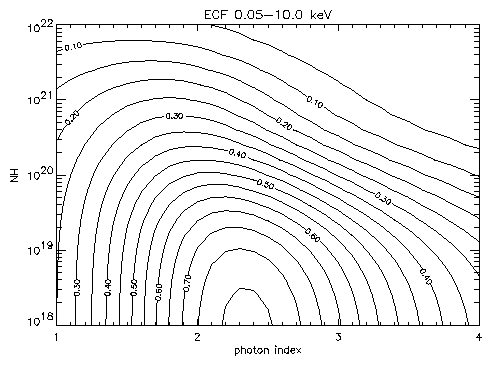
Figure 1: Energy-to-counts conversion factor for the HRC observing a
power law spectrum as a function of photon spectral index and absorbing
column density. Contours are labeled in units of 1011 counts
cm2 erg-1.
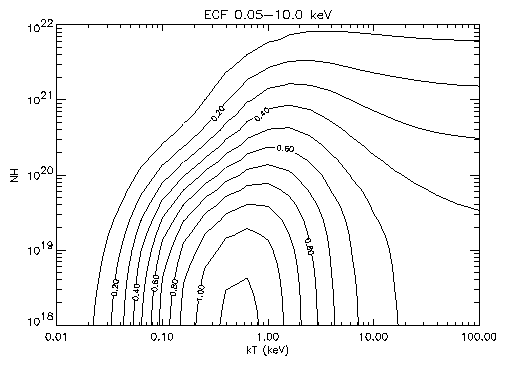
Figure 2: Energy-to-counts conversion factor for the HRC-I observing a
bremsstrahlung spectrum as a function of temperature and absorbing
column density. Contours are labeled in units of 1011 counts
cm2 erg-1.

Figure 3: Energy-to-counts conversion factor for the HRC-I observing a
black-body spectrum as a function of temperature and absorbing
column density. Contours are labeled in units of 1011 counts
cm2 erg-1.
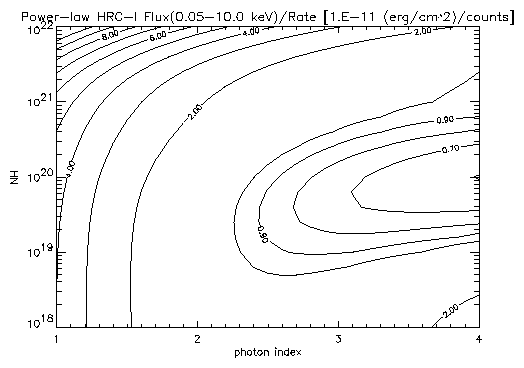
Figure 4: Rate to incident flux conversion factor for the HRC-I observing a
power law spectrum as a function of photon spectral index and absorbing
column density. Contours are labeled in units of
10-11 (erg cm-2 s-1)/(count s-1).
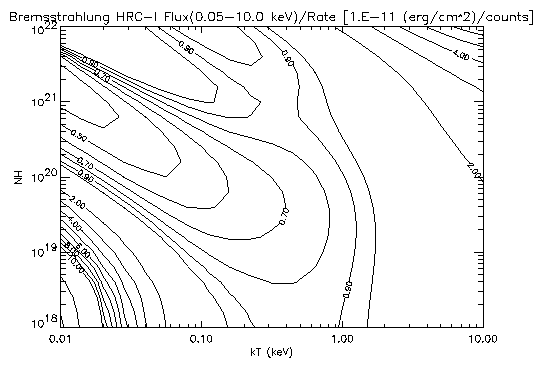
Figure 5: Rate to incident flux conversion factor for the HRC-I observing a
black-body spectrum as a function of temperature and absorbing
column density. Contours are labeled in units of
10-11 (erg cm-2 s-1)/(count s-1).
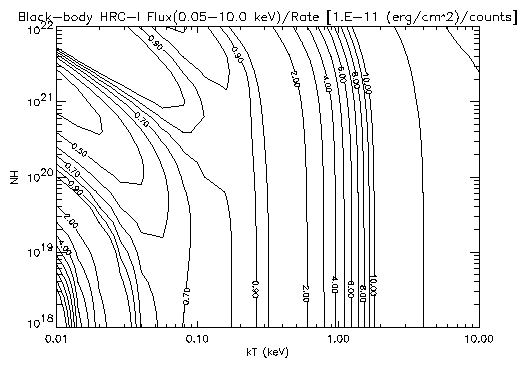
Figure 6: Rate to incident flux conversion factor for the HRC-I observing a
bremsstrahlung spectrum as a function of temperature and absorbing
column density. Contours are labeled in units of
10-11 (erg cm-2 s-1)/(count s-1).
Dr. Michael Juda
Harvard-Smithsonian Center for Astrophysics
60 Garden Street, Mail Stop 70
Cambridge, MA 02138, USA
Ph.: (617) 495-7062
Fax: (617) 495-7356
E-mail: mjuda@cfa.harvard.edu
File translated from TEX by TTH, version 2.01.
On 11 Mar 1999, 11:51.






